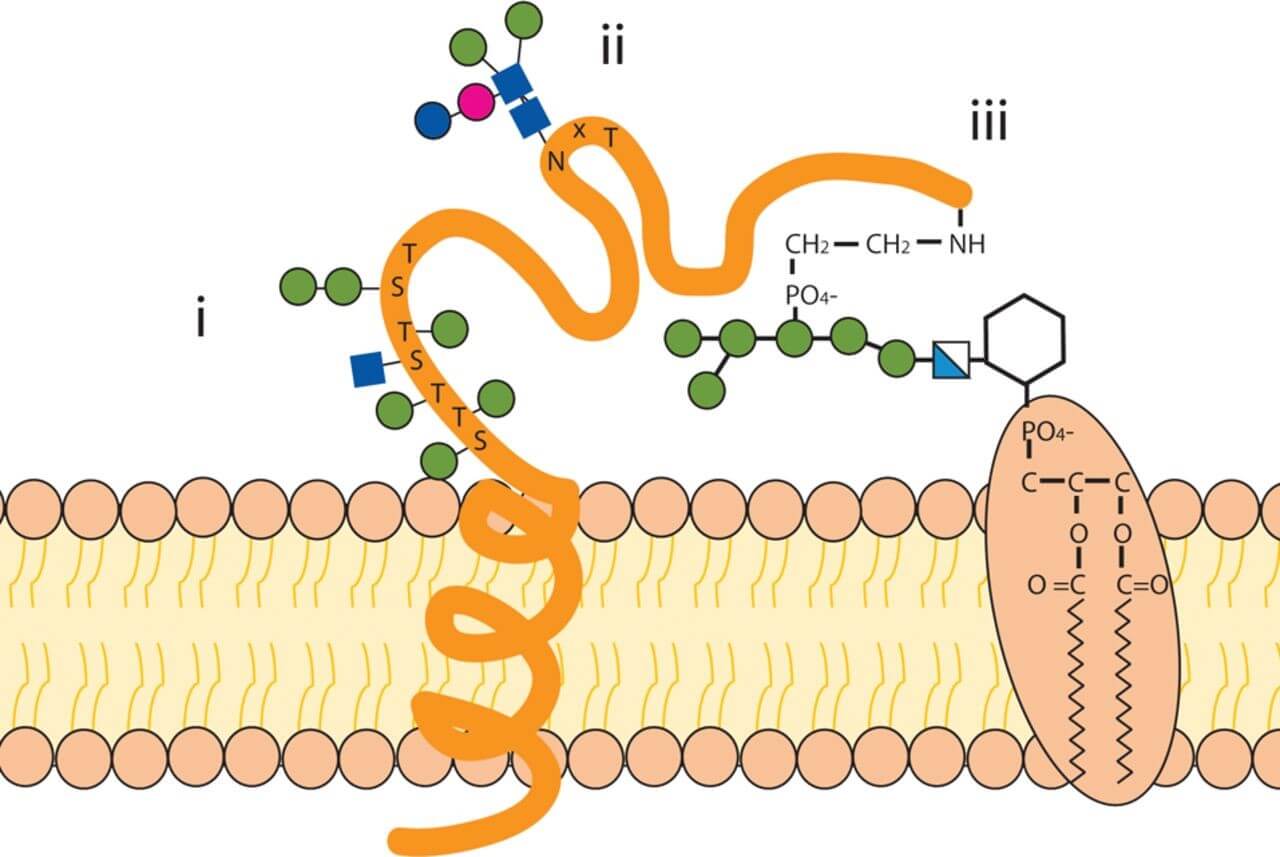Mempro™ Virus-Like Particles (VLPs) Glycosylation Modification
Creative Biostructure has developed various methods for appropriate post-translational modification of virus-like particles (VLPs). With the advanced Mempro™ VLPs platform established for years, scientists from Creative Biostructure can perform Mempro™ VLPs glycosylation modification services.
In biology, glycosylation intends the enzymatic process that appends glycans to proteins, lipids and other organic molecules and it is one of the important forms of co-translational and post-translational modification. Glycans play several structural and functional roles in membrane and secreted proteins. VLPs are resemble to viruses without any viral genetic materials so they can’t replicate. These spontaneously occurring bionanomaterials usually simulate the conformation of real viruses, however, they are hopefully regarded as vaccine platforms and therapeutic delivery systems. Glycosylation is often needed for proper protein function, and it is also a key feature in most VLP-based proteins. Creative Biostructure can offer custom perfect Mempro™ VLPs glycosylation modification services.
 Figure 1. Schematic overview of protein glycosylation. (Biochemical Society Transactions 2013)
Figure 1. Schematic overview of protein glycosylation. (Biochemical Society Transactions 2013)
- Approaches of Mempro™ VLPs Glycosylation Modification
Usually, the method to express recombinant glycoproteins is their amassment in ER by accretion of C-terminal signal H/KDEL ER retention motif. Knockout of Specific Glycosyltransferases such as beta-1,2-xylosyltransferase and core alpha-1,3-fucosyltransferase offers another strategy to achieve the VLPs Glycosylation Modification. For application of therapeutic proteins, VLPs can be modified by humanization of N-Glycosylation.
- Application of Mempro™ VLPs Glycosylation Modification
The glycosylation of VLP proteins has primary influence on their structure and function, therefore, it is crucial to decide the choice of platforms for their production.
Due to the guide, localize and potentiate of viral glycoproteins during the process of enveloped virus assembly, glycosylation is supposed to be an important post-translational modification of VLPs. For example, the glycosylation pattern of GP1 and GP2 glycoproteins of Lassa virus (LASV) has been indicated to play an essential structural and functional role in preserving protein stability and allowing binding and fusion to host cells.
Creative Biostructure has been pioneered in the VLPs production for a long time, we can provide various Mempro™ VLPs modification strategies services. Please feel free to contact us for a detailed quote.
References:
Kim H S, Jeon J H, Lee K J, et al. N-glycosylation modification of plant-derived virus-like particles: an application in vaccines[J]. BioMed research international, 2014, 2014.
Lico C, Schoubben A, Baschieri S, et al. Nanoparticles in biomedicine: new insights from plant viruses[J]. Current medicinal chemistry, 2013, 20(28): 3471-3487.
Grasso S, Santi L. Viral nanoparticles as macromolecular devices for new therapeutic and pharmaceutical approaches[J]. Int J Physiol Pathophysiol Pharmacol, 2010, 2(2): 161-178.
Pokorski J K, Steinmetz N F. The art of engineering viral nanoparticles[J]. Molecular pharmaceutics, 2010, 8(1): 29-43.
Chen Q, Lai H. Plant-derived virus-like particles as vaccines[J]. Human vaccines & immunotherapeutics, 2013, 9(1): 26-49.